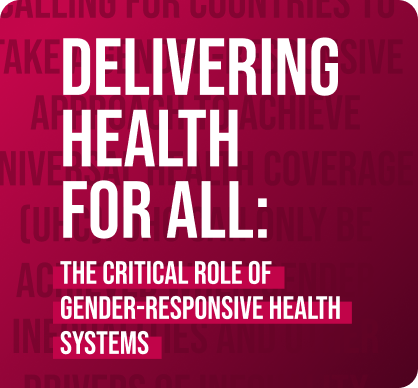A World Free of Hidden Hunger
A woman’s contribution to her family and her community includes her roles as care giver, health care provider, food provider and income earner. Women of child-bearing age are one of the groups most at risk of micronutrient deficiencies, which may stop them from fulfilling these many roles in the way that they want to.
Vitamin mineral deficiencies even put them at greater risk of death. Two of the four leading causes of maternal death have micronutrient deficiencies as an underlying cause: hypertensive disorders and postpartum haemorrhage.
Children who lose their mothers within the first months of their lives are at greater risk of death themselves. Every year, 32 million infants are born small, underweight and undernourished. They take their first breaths already physically and mentally stunted. Often, that is because their mothers enter pregnancy also depleted from illness, disease and malnutrition.
When adolescent girls are undernourished, they become women and mothers who are under-nourished, and as a result their children don’t get the right start in life. These are the children who are most likely to perish or face consequences, including mental and physical impairments that last a life time.
Of the 7 million children under five who die every year, almost a million babies die in their first month of life and close to 3 million die in the first year.
Survival, Health, Productivity
Adequate nutrition for women can improve their health, increase their economic productivity, increase maternal survival rates and contribute to child health. It can also play an important role in the survival and well-being of their children.
This is why Women’s and Newborn Survival and Health is one of the main themes of MI’s work: improving the survival and health of women and their newborns by ensuring that their needs for essential vitamins and minerals are met during the reproductive years, and particularly during pregnancy and after birth.
The Optimal Mix for Improved Health
Addressing women’s micronutrient needs is a challenging task. No single intervention can reach all women at all times, so an optimal mix of approaches is needed.
The most common ways to address micronutrient deficiencies in women have been to provide iron and folic acid supplements to cater to a woman’s elevated need for iron during pregnancy and provide calcium supplements for the prevention of hypertensive disorders such as preeclampsia, and to fortify staple foods with iodine, iron, folic acid, vitamin A and other micronutrients so that women’s daily intake is improved throughout their lives. This includes one of our largest programs: salt iodization
The Best Chance for a Healthy Life Together: survival and health for pregnant women and newborns
As part of focus on improving health and nutrition for women, we also focus on the unique needs of women throughout pregnancy.
In collaboration with country governments and partners, we are looking to improve the quality and uptake of antenatal care, delivery and postnatal care, integrating strong nutrition components into the care and quality of programs women receive.
We want to reach women earlier in their pregnancies and give health workers the training they need to ensure both women and newborns get the care they need for survival and health.
Working with communities for better solutions
We worked collaboratively with governments, communities and partners to increase demand and improve health and nutrition services for pregnant women and their newborns in under-served areas in Africa. Learn more about this community-based package of care developed through pilot projects and implementation research.


